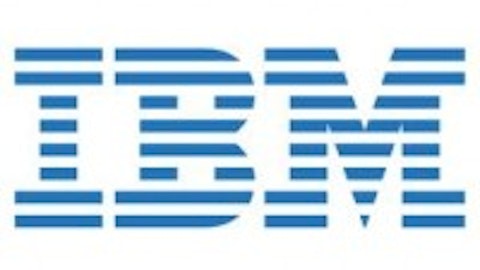Dividend stocks outperform non-dividend-paying stocks over the long run. It happens in good markets and bad, and the benefit of dividends can be quite striking: Dividend payments have made up about 40% of the market’s average annual return from 1936 to the present day. But few of us can invest in every single dividend-paying stock on the market, and even if we could, we might find better gains by being selective. That’s why we’ll be pitting two of the Dow Jones Industrial Average‘s dividend payers against each other today to find out which is the true dividend champion. Let’s take a closer look at our two contenders now.
Tale of the tape
General Electric Company (NYSE:GE) is the only member of the Dow’s century club, as it has been a continuous component since 1907. The Schenectady, N.Y.-based industrial conglomerate has successfully navigated more than a century of change without losing its foundational identity, as you’ll still find GE turbines and engines in power plants and high-performance transportation around the world. In keeping with its focus on electricity, General Electric Company (NYSE:GE) has also made significant inroads toward an alternative-energy future, which makes it a real threat to the future of its opponent today.
Exxon Mobil Corporation (NYSE:XOM) is another of the Dow’s longest-tenured components, with a continuous streak of membership dating back nearly 85 years. Based in the Dallas suburb of Irving, Texas, ExxonMobil is the largest and most direct descendant of Standard Oil, and it also happens to be the largest component on the Dow. ExxonMobil produces more oil and gas than many countries, which gives it a dominant market position that’s unlikely to erode unless the world engages in a wholesale transition from petroleum products to alternative energy.
| Statistic | General Electric | ExxonMobil |
|---|---|---|
| Market cap | $245.1 billion | $411.4 |
| P/E ratio | 16.4 | 9.3 |
| TTM profit margin | 9.6% | 9.6% |
| TTM free-cash-flow margin* | 9.5% | 3.5% |
| Five-year total return | (7.6%) | 10.7% |
Source: Morningstar and YCharts. TTM = trailing-12-month.
*Free-cash-flow margin is free cash flow divided by revenue for the trailing 12 months.
Exxon Mobil Corporation (NYSE:XOM) has size and valuation on its side, but GE has the better free-cash-flow margin — an important consideration for dividend investors. Which of these two stalwarts will come out ahead?
Round one: endurance

Round two: stability
Paying dividends is all well and good, but how long have our two companies been increasing their dividends? The same dividend payout year after year can quickly fall behind a rising market, and there’s no better sign of a company’s financial stability than a rising payout in a weak market (so long as it’s sustainable, of course). This one is an easy victory for Exxon Mobil Corporation (NYSE:XOM), as General Electric Company (NYSE:GE) was forced to drastically cut its dividend in the aftermath of the 2008 financial crisis, while the oil giant hasn’t reduced its payout in decades.
